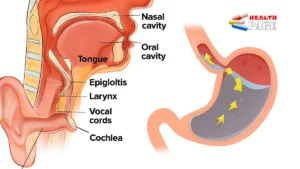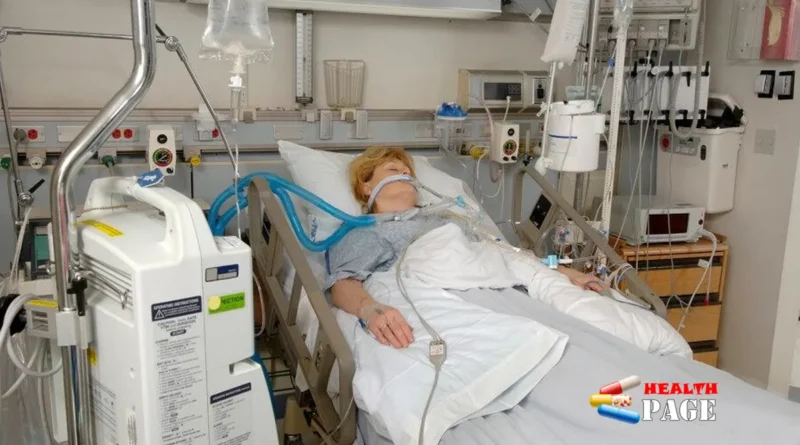The use of ventilator in clinical practice is a nightmare for many people
The application of ventilators in clinical practice is a nightmare for many people, especially beginners. There is too much data and too many concepts. Today, we will sort out some concepts for beginners.
The first problem in ventilator adjustment is to determine the ventilation mode
Ventilation modes are mainly divided into controlled ventilation mode and assisted ventilation mode , and the others are variations and combinations of these two modes.
For example, commonly used modes include controlled ventilation (CV), assist-controlled ventilation (A/CV), intermittent mandatory ventilation (IMV), synchronized intermittent mandatory ventilation (SIMV), pressure support ventilation (PSV), and other new ventilation modes include mandatory minute ventilation (MMV), pressure-regulated volume-controlled ventilation (PRVCV), volume support ventilation (VSV), volume-assured pressure support ventilation (VAPS), etc.
The choice of ventilation mode is often based on departmental preferences and the physician’s familiarity. There is no optimal ventilation mode for all patients and all diseases; the ventilator is individually adjusted for each patient.
For patients with no spontaneous breathing, or with minimal spontaneous breathing, mechanical ventilation is most often initiated with A/CV to provide near-complete ventilatory support and allow the patient’s respiratory muscles to rest. As the patient’s condition improves, some simulated partial work of ventilation, such as SIMV or PSV combined with SIMV, is used until lung function recovers, and the PSV mode is gradually used for weaning. The overall strategy for selecting the mode is determined by the patient’s spontaneous breathing status. The goal is simply to help the patient’s respiratory muscles rest early on, and then, as the condition improves, gradually wean the ventilator without interfering with the patient’s spontaneous breathing. This is like a child learning to ride a bicycle. Initially, they’re afraid of falling, so parents support them from behind and provide ample assistance.
As the child gradually gains the ability to ride, parents gradually let go, allowing the child to ride freely. The goal is for the child to ride independently. The same is true for ventilators: they are meant to help patients overcome initial difficulties, not to replace their breathing. Once the difficulties have subsided, weaning them from the ventilator is crucial, ultimately allowing the patient to breathe freely. This is the original purpose of ventilators.
After setting the mode, it’s time to adjust the parameters. (ventilator)
① Tidal volume : 5-12 ml/kg
②Respiratory rate : 12-20 breaths/min
③ Inhalation time : 0.8 to 1.2 seconds. Exhalation time is 2 to 1.5 times the inhalation time.
④Flow rate : 40~60L/min, decreasing wave or square wave.
⑤Trigger: The pressure trigger is usually -0.5~-1.5cmH20, and the flow rate trigger is usually 2~5L/min.
⑥Oxygen concentration : Try to keep it below 50%.
⑦ PEEP (positive end-expiratory pressure): 2~6cmH20.
⑧ Pressure support: 8-20 cmH2O. The maximum should be lower than 30-35 cmH2O.
The above are general principles, which should be adjusted clinically according to the patient’s condition. The principle is to maintain oxygen saturation above 90% with the minimum tidal volume, minimum pressure, and minimum oxygen concentration.
For patients with ARDS and severe atelectasis, the PEEP value can exceed our recommended upper limit by several times, because the application of ventilators is to achieve the purpose of treatment, and it cannot be limited to a fixed number. The advantage of pressure control is that it can avoid barotrauma, because the pressure is under our control, but the disadvantage is that it may cause the patient to have insufficient tidal volume. Because the pressure is constant, such a high pressure will blow out a lot of gas. If the patient’s airway pressure is relatively high, the air cannot be blown in, and the tidal volume will be insufficient. The capacity mode can guarantee the tidal volume. As long as the patient’s tidal volume value is insufficient, it can be adjusted to the desired value. However, the problem is that it may cause barotrauma and worsen the patient’s condition.
After discussing the parameter issues, let’s look at the four major problems that need to be solved in the clinical application of ventilators:
① Airway high pressure alarm
②CO2 retention
③ Hypoxemia
④Human-machine confrontation
1. Peak airway pressure: Peak airway pressure 35-40 (alarm when exceeding the alarm line)
Equation of motion: Peak airway pressure = flow rate × airway resistance + tidal volume/inverse compliance + intrinsic PEEP
The flow rate and tidal volume are basically constant (because we have set them manually)
Then, there are only three factors that cause the peak pressure to be too high:
① Airway resistance: (ventilator circuit, airway spasm, secretions)
② Decreased compliance: (pulmonary edema, pneumothorax, lung hyperinflation, pleural effusion, increased intra-abdominal pressure)
③ Increased PEEP: (excessive tidal volume, short breathing time, increased expiratory resistance)
The difference between peak inspiratory pressure and plateau pressure represents airway resistance. Plateau pressure generally does not exceed 30 cmH2O.
If the peak pressure increases and the plateau pressure remains unchanged, it reflects an increase in airway resistance;
If the peak pressure increases, the plateau pressure increases, and the response compliance decreases or PEEP increases.
2. CO2 retention
Alveolar ventilation = RR × (tidal volume VT – dead space VD)
The dead space generally remains unchanged, and only the frequency and tidal volume can be adjusted.
Alveolar carbon dioxide partial pressure (PaCO2) = 0.863 × carbon dioxide output (VCO2) ÷ (tidal volume VT – dead space VD)
Improve alveolar ventilation:
①Increase VT
② Reduce VD
③ Reduce CO2 output
How to reduce the work of breathing? (Sedation/muscle relaxation)
① Reduce airway resistance
②Increase compliance
③ Reduce intrinsic PEEP
④ Decreased minute ventilation (faster breathing, more work, more CO2)
3. Hypoxia
Increased oxygen consumption: Treat the underlying disorder
Ventilation disorders: Improve ventilation
Solution: Reduce labor and reduce human-machine interaction, increase oxygen concentration, increase PEEP, increase inspiratory pressure/VT (actually this method is stupid), and prolong exhalation.
There are only three ways: sedation, increasing PEEP, and increasing oxygen concentration.
4. Human-Machine Confrontation
① Check the ventilator mode
②Are the tidal volume and respiratory rate appropriate?
③ Primary disease control
④ Moderate sedation



Pingback: Scalp Health: How Much Is Your Scalp Health Score?
Pingback: Home Ventilator: How Long It Takes to Reduce Snoring Effectively